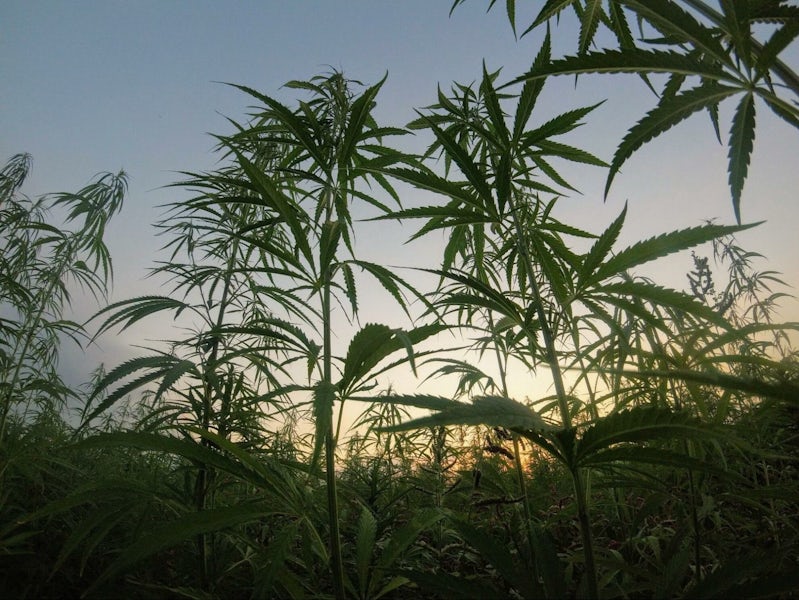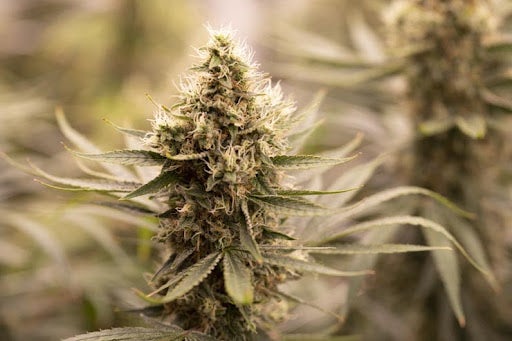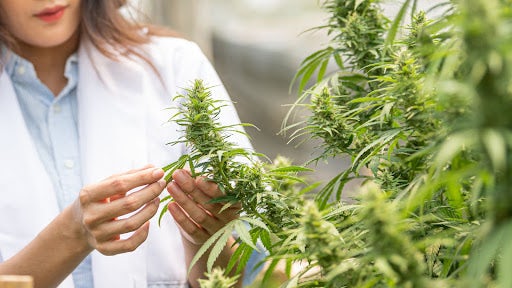So you want to grow your own cannabis at home. There are many opinions on the best way to grow cannabis, but the most important thing for all new growers is that cannabis is just a plant.
This is why The Cannigma Cultivation Guide doesn’t start with choosing your growing environment, lights etc – though we get to that as well. Instead, we started with the real basics – photosynthesis, transpiration and respiration. A deeper understanding of flowering plants will make your buds taste that much sweeter – once they’re properly trimmed and cured of course.
So, let’s dig into the environmental factors of cannabis growth and development, broken down into the shoots and the roots.
The Shoots
1. Light
Light is important to all plants that use photosynthesis, and it is one of, if not the most important factor when growing cannabis. For new growers, understanding how light influences cannabis growth and development is essential for growing big, healthy, plants. Two key ways light influences plants are by providing energy as well as acting as a sort of seasonal calendar.
With the exception of autoflowering or “day-neutral” plants, most cannabis plants are “short-day” flowering plants. Although flowering initiation can vary based on numerous factors, short-day flowering plants (like cannabis) typically begin producing flowers outdoors around the autumn equinox when they are exposed to equal hours of light and dark (12 hours light, 12 hours dark). This means that photoperiod, or daily hours of light exposure, directly correlates to when your plant will begin to flower. Remember – you’re growing flowers! They’ll start showing up during the flowering stage of growth and development. This is important when growing indoors, since you decide when to “flip” your plants from the vegetative stage to the flowering stage by controlling the light.
Light is also an energy source for photosynthesis, but not all light provides the same amount of energy. Plants that utilize photosynthesis are able to detect subtle differences in the color of light, and these colors all affect photosynthesis differently as light color corresponds with energy wavelength. The easiest way to understand this concept is to imagine the colors of the rainbow. The acronym ROYGBIV (red, orange, yellow, green, blue, indigo, violet) is helpful in understanding the spectrum of energy related to light color, with red the longest wavelength and lowest energy of the spectrum, and violet the shortest wavelength and highest energy. This is why it’s so important to consider spectrum when purchasing grow lights.
| Note: Depending on your lighting source and shaping techniques, different parts of the plant may mature at different times. For example, shaded buds with less than optimal light exposure may grow slower or vary in cannabinoid and/or terpene concentration than sun-exposed flowers. |
2. Humidity
The term ‘relative humidity’ (RH) refers to the amount of water vapor in the air and is usually expressed as a percentage (e.g. 50% RH). This can have a major impact on how cannabis plants grow. Low humidity means less water in the air and results in increased evaporation and water use. Excessive humidity comes with its own problems, including creating an ideal environment for pests, mildew, and mold to grow.
One key factor related to humidity that is often left out of the conversation is vapor-pressure deficit (VPD) – the difference between the maximum water vapor the air can hold at a given temperature and RH. Although not all growers measure VPD, it significantly influences stomata activity and is directly related with transpiration rate and metabolism.
A VPD that is too high means drier air and increased evaporation and transpiration. Too low a VPD can lead to slowed transpiration and reduced growth. Since slowed transpiration reduces nutrient uptake, both too high and too low of a VPD may appear as nutrient deficiencies. It is VPD that drives transpiration and nutrient uptake in plants; the uptake of water at the roots is determined by the loss of water through the shoots, and the loss of water through the shoots is determined by how much water is in the air.
| Important to consider: Optimal VPD changes over the course of a plant’s life as its environmental needs change (see chart below). |
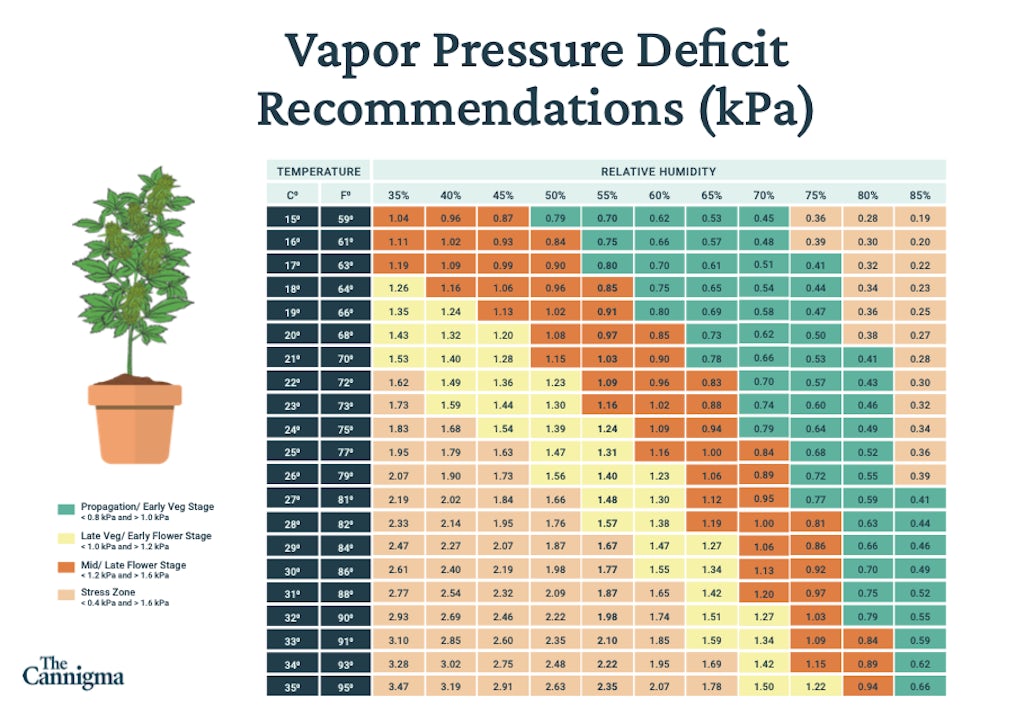
3. Air temperature
Most often when people refer to “temperature” they are actually referring to air temperature. Since hotter air can retain more moisture, relative humidity and air temperature are inversely related (see graph below). This means that as the air temperature rises, humidity decreases as water vapor in the air evaporates.
Air temperature can fluctuate greatly between lights on and lights off in a grow tent. Extreme cold can cause plants to close their stomata to retain heat. Extreme heat also causes stomata to close to prevent losing water vapor too quickly. Both of these extremes can reduce plant metabolism, stunt growth, and can ultimately lead to plant death.
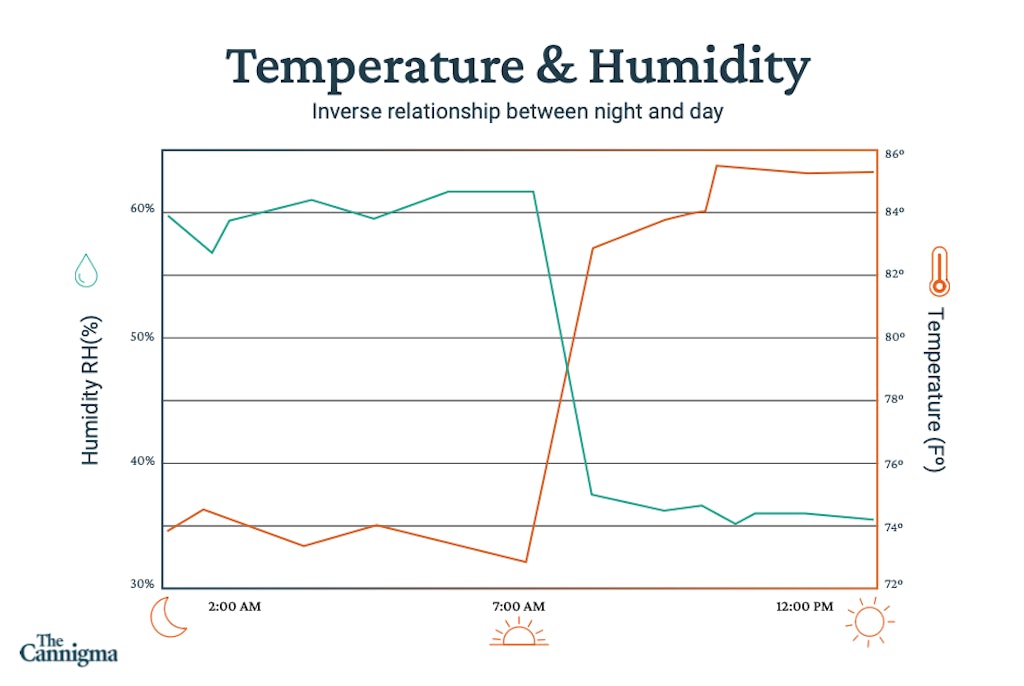
4. Carbon dioxide (CO2)
Carbon dioxide is essential for photosynthesis. Light energy is used to convert CO2 and H2O into sugar and oxygen. As the CO2 concentration increases, the rate of photosynthesis increases until a saturation point where no more CO2 can be absorbed. The guard cells (stomata) previously mentioned are specialized to regulate gas exchange, working to optimize the movement of oxygen, water, and CO2 in and out of the shoots.
Plants cultivated outside typically don’t need supplemental CO2 (because nature knows what it’s doing). Indoor growers however, may find themselves needing additional carbon dioxide to maximize yields and improve plant growth and development. Without fresh air for plants to exchange oxygen for carbon dioxide, the CO2 concentrations can become low, hindering photosynthesis and dramatically reducing plant growth.
| IMPORTANT: Although CO2 is a naturally occurring gas that both humans and plants use, it is invisible and odorless and can be fatal at high-levels. If you’re supplementing carbon dioxide in your grow room, ensure there are no leaks in any CO2 devices and always use a CO2 monitor and alarm. |
5. Air flow/wind
Outdoor plants are constantly exposed to natural elements, and that includes wind. Airflow ventilation is one of the often-forgotten environmental factors in healthy cannabis growth and development. Like all environmental factors, we want to “recreate” beneficial stressors that the plant would be exposed to outdoors.
Like human bone that becomes stronger in response to stress from resistance we call exercise, stems increase in rigidity and structural integrity in response to stress from air flow. Plants that lack airflow are prone to developing weak stems, leaving them tall, skinny, and unable to hold bud weight as the plant grows. Excessive air flow, on the other hand, which constantly bends the entire plant, could lead to stunted growth or even broken shoots. Thankfully, you don’t need a wind sensor to achieve optimal air flow; a light breeze that just makes the leaves wave or dance gently can assist in the development of strong, dense shoots.
Stagnant air within the grow space can also increase the risk of pests, mold, and mildew. Some pests hide under leaves, along stems, and even in the soil itself. A small fan providing a gentle breeze is often enough to prevent a stationary environment, build stem strength, and reduce the chance of pests or pathogens.
The Roots
6. Oxygen (O2)
As well as releasing oxygen created during photosynthesis, plants need to absorb oxygen to perform respiration – i.e. to make energy. Since plant roots are non-photosynthetic tissues that can’t produce oxygen, they get it from air pockets in the soil or grow medium. These air pockets can vary in size based on makeup of the grow medium, and also on the water saturation levels of the medium.
Root oxygenation and soil aeration play an important role in both transpiration and cellular respiration in all plants. This means that plants are highly dependent on the grow medium holding the optimal amount of oxygen within. Make sure not to overwater, as roots in compacted soil or fully submerged in water with low O2 can cause irreversible damage if left unchecked. This is why even when growing hydroponically, when the roots are submerged in water, it’s important to have an air pump to incorporate adequate O2 to the roots. Grow mediums like coco coir and soils that contain perlite promote aeration and are less prone to overwatering.
7. Root temperature
Whether it’s sunlight outdoors or artificial lights indoors, when light heats the air temperature, soil temperature also rises. But it’s not only the air that influences the soil temperature; the grow medium, plant depth, and moisture level can also change how well the soil releases or retains heat. Not all growers monitor soil temperature, but roots are the reservoir system of water and nutrients, and if they are the wrong temperature, things can deteriorate quickly for any plant.
Roots are a living part of the plant and therefore have an optimal temperature range in which they thrive at water and nutrient uptake. Although every plant varies, root temperatures above 88°F & below 55°F (above 31°C and below 12°C) can result in stunted growth and ultimately plant death if exposed for too long. So although it’s not common practice to monitor root temperature, soil-less methods and certain extreme climate conditions may call for a root-zone thermometer if your plant is showing developmental issues.
8. Water
Water is one of the most important factors of cannabis growth and development; both transpiration and photosynthesis involve water.
Irregular watering can lead to irregular plant growth and development. Too little water and your plant can become dry, brittle, and stressed. Too much water and your plant’s roots can be deprived of important oxygen, and even drown. One of water’s most important purposes is the transportation and movement of nutrients and minerals, which are typically absorbed at the roots and distributed throughout the rest of the plant.
9. Nutrients
When most people hear the word “fertilizer” they think of synthetic fertilizers, but the word fertilizer refers to any substance or mixture added to soil or a grow medium that increases its fertility or ability to sustain life. Some fertilizers are synthetically produced, others are mixtures of decomposed organic waste such as worm castings or bat guano (aka bat poop), which are rich in essential nutrients. If you want an organically-fed plant, it’s important to check the source of the nutrients on the product label.
There are 16 essential nutrients divided into 3 categories that aid in healthy plant growth and development. These categories are divided based on the amount required by the plant to thrive. Macronutrients are needed in much larger amounts than secondary nutrients, which are needed in larger amounts than micronutrients.
- Primary macronutrients include nitrogen, phosphorus, potassium, carbon, hydrogen, oxygen
- Secondary macronutrients – calcium, magnesium, sulfur
- Micronutrients – boron, iron, manganese, zinc, copper, molybdenum, chlorine
While plants can absorb carbon, hydrogen and oxygen from the surrounding air, they can only absorb nitrogen, potassium, and phosphorus through the root system. For this reason, the three main nutrients in fertilizers and plant food are labeled in a ratio of nitrogen (N), phosphorus (P), and potassium (K) or NPK. For example, a fertilizer with an N-P-K ratio of 5-4-3 indicates the product contains 5% nitrogen, 4% phosphorus and 3% potassium.
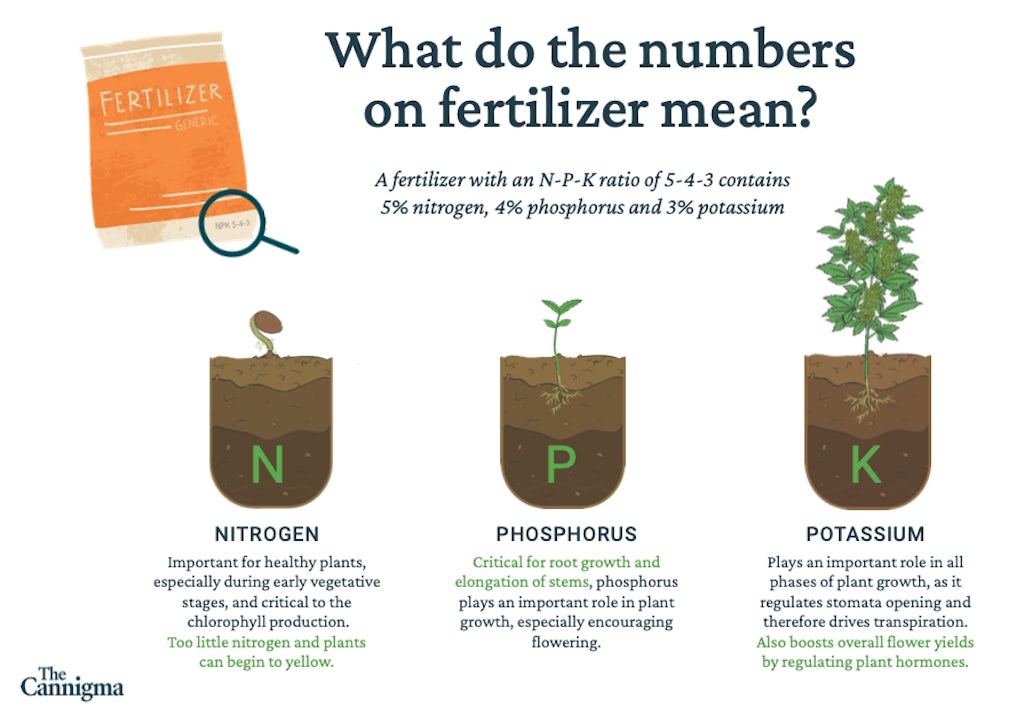
NPK ratios are important to consider when choosing what to feed your plant, as nutrient requirements change throughout the lifecycle. During vegetation, when shoot and root growth is rapid and abundant, nitrogen is needed in the largest quantities, whereas during flowering potassium is the most essential macronutrient.
Note: Like environmental parameters, nutrient requirements may vary significantly from plant to plant, and from one growing medium to another. It is important to pay attention to signs and symptoms of nutrient burn (excess nutrients) or nutrient deficiencies (insufficient nutrients)
Sign up for bi-weekly updates, packed full of cannabis education, recipes, and tips. Your inbox will love it.

 Shop
Shop Support
Support